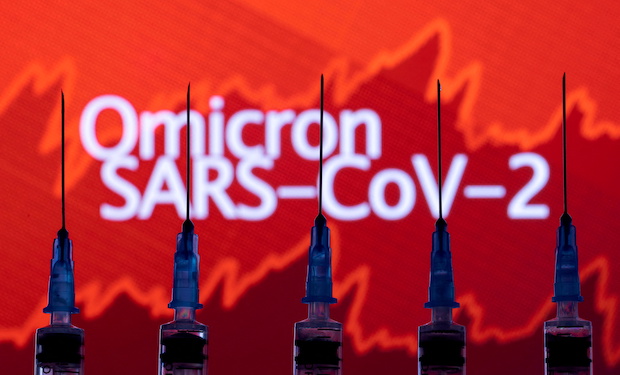
Syringes with needles are seen in front of a displayed stock graph and words “Omicron SARS-CoV-2” in this illustration taken, Nov. 27, 2021. (REUTERS/Dado Ruvic/Illustration)
Doctors in one of the cities where Omicron was first identified say the surge driven by the new variant has been marked by less serious disease than earlier waves of the pandemic and there are clear signs that case and hospital admission rates may decline over the next few weeks.
At Steve Biko Academic Hospital in the City of Tshwane, doctors compared 466 infected patients admitted since mid-November 2021 to 3,976 patients admitted before then. The mortality rate during the Omicron surge was 4.5 percent, compared to 21.3 percent in the earlier period, they reported in the International Journal of Infectious Diseases.
Omicron patients were discharged after an average of four days, compared to 8.8 days for patients with earlier variants.
Unprecedented speed
At the peak of the Omicron surge, the number of beds filled with infected patients was half of that in the earlier period, and 63 percent of Omicron patients were hospitalized for other reasons, with the virus only detected by mandatory tests.
“The Omicron outbreak has spread and declined … with unprecedented speed, peaking within four weeks,” the researchers said.
They noted that outcomes may vary in countries with different population characteristics and levels of immunity from infection and vaccination.
But if the pattern seen in South Africa “continues and is repeated globally … Omicron may be a harbinger of the end of the epidemic phase” of the health crisis, they added.


